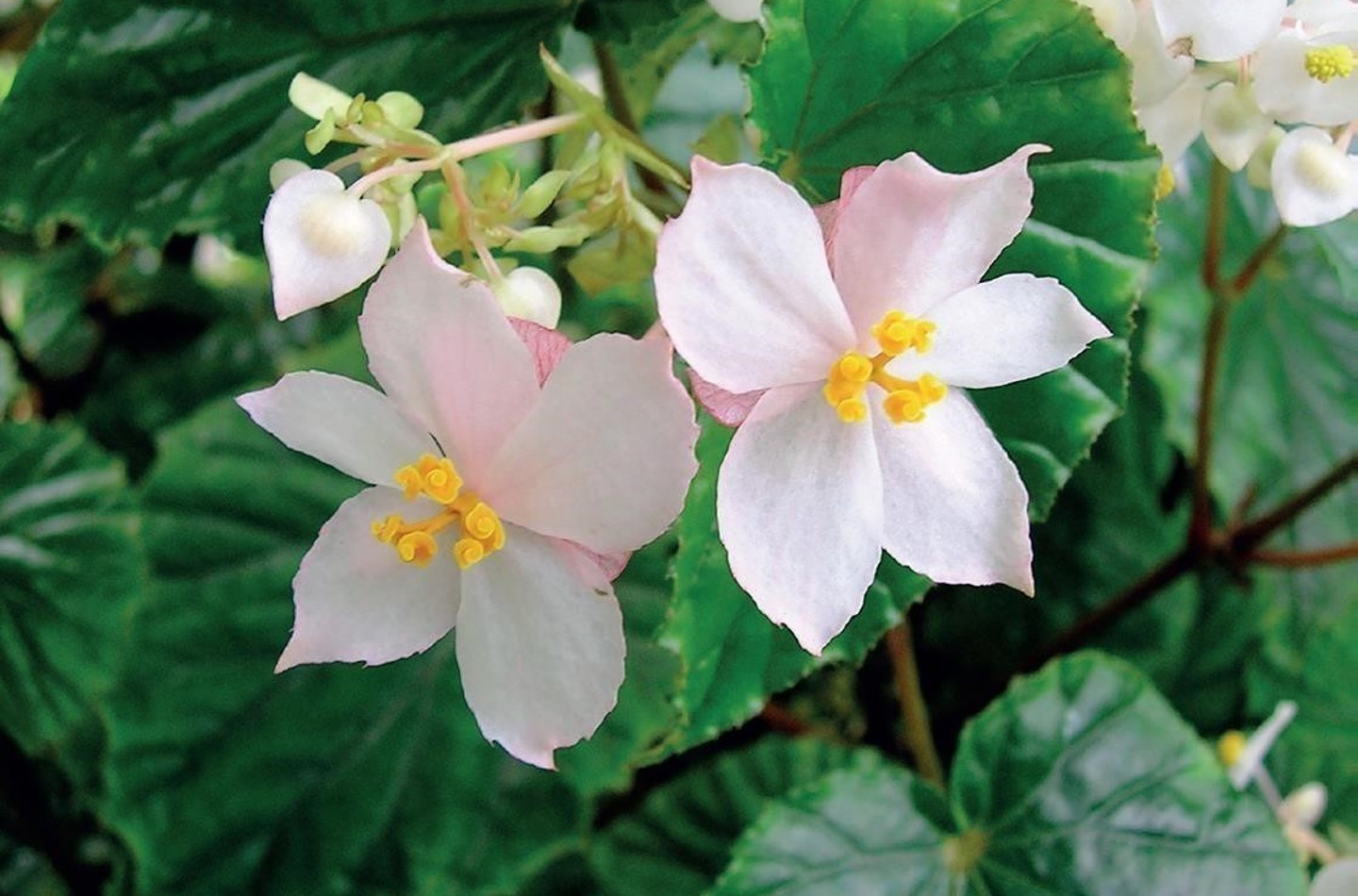
Research groups
Streptocarpus collection
Streptocarpus collection comprises:
- 108 species (78% of known species)
- 71% wild origin
Projects which use this living collection include:
- Genetics and evolution of pollination syndromes in Streptocarpus (ongoing PhD, MSc projects) PhD project ‘Genetics, origin and evolution of vegetative meristems in Gesneriaceae’ (which includes several sub-projects involving study of the origin of anisocotyly in the family focussed on caulescent/acaulescent and on rosulate/unifoliate Streptocarpus morphs)
- Taxonomy and systematics of Madagascan Streptocarpus
- Comparative anatomy and morphology of Gesneriaceae genera across the family
- Seed ontogeny in Old World genera in relation to available tribal arrangements
- Comparative chromosome and genome evolution of selected Old World Gesneriaceae genera
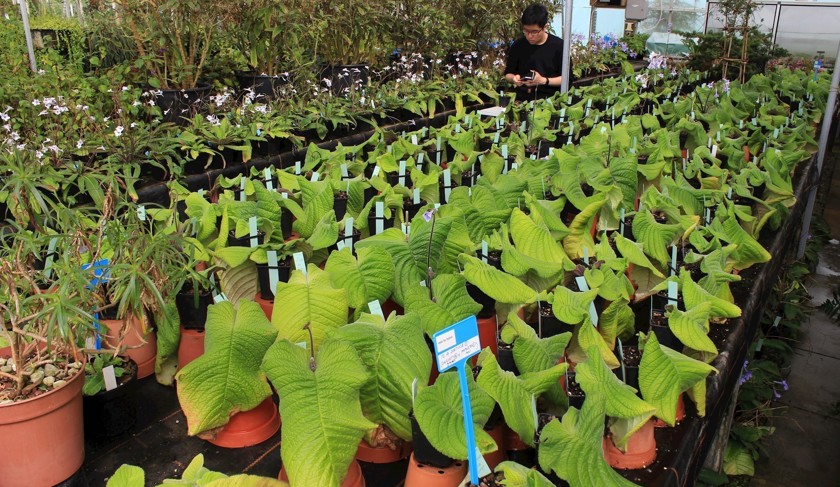
Arabian collection
Arabian collection comprises:
- 54 Families | 103 genera | 186 species
- 96% wild origin
RBGE is home to the Centre for Middle Eastern Plants (CMEP), an authority on the Middle Eastern environment.
The living collection is used for:
- Taxonomy and systematics of Arabian Peninsula and Socotra species (core research, plus MSc and PhD projects)
- Horticultural projects and experimental studies of Arabian species (BSc and MSc projects)
- Cultivation of succulents and geophytes for taxonomic research
- Flowering of critical species for plant profiling
- Cultivation of Arabian plants for Education and external cultural programmes
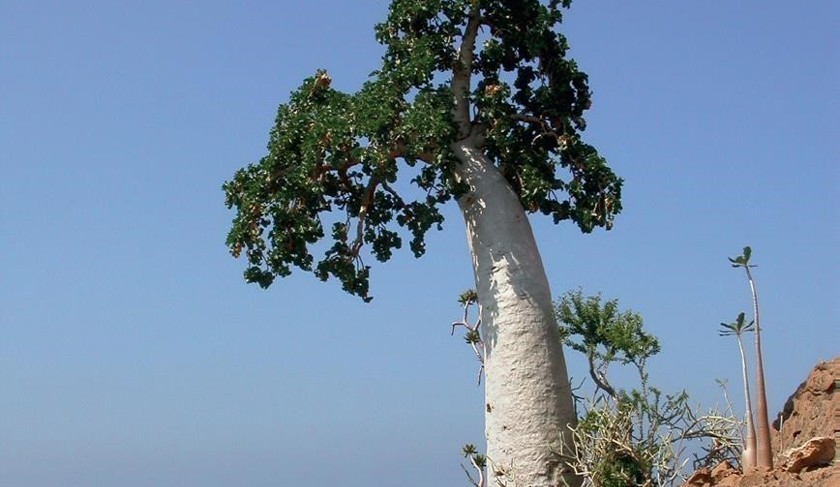
Dendrosicyos socotranus, an endemic of the island of Socotra
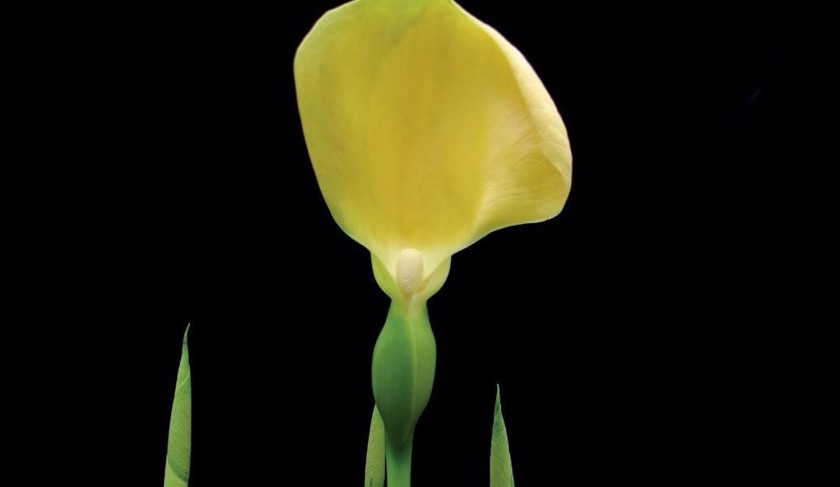
Remusatia vivipara, collected in Oman, flowering for the first time in cultivation
Begoniaceae collection
Begoniaceae collection comprises:
- 194 species (12% of known species)
- 73% wild origin
Begonia is one of the largest flowering plant genera, ideal for researching tropical diversity. RBGE holds a unique collection of global importance, particularly strong in South East Asian rarities. Over 50 species new to science have been described at RBGE since 2009, the majority of which have relied on living material for identification.
The living collection is also used for:
- Biogeography: unravelling the diversification of ca.2,000 species from Peru to Papua
- Niche evolution: how do Begonia species di er in their photosynthetic capacity?
- Conservation: micro-endemic species under threat in the wild grown for ex-situ conservation
- Display: Begonia species have significant horticultural value and are displayed within the different environments of the public glasshouses
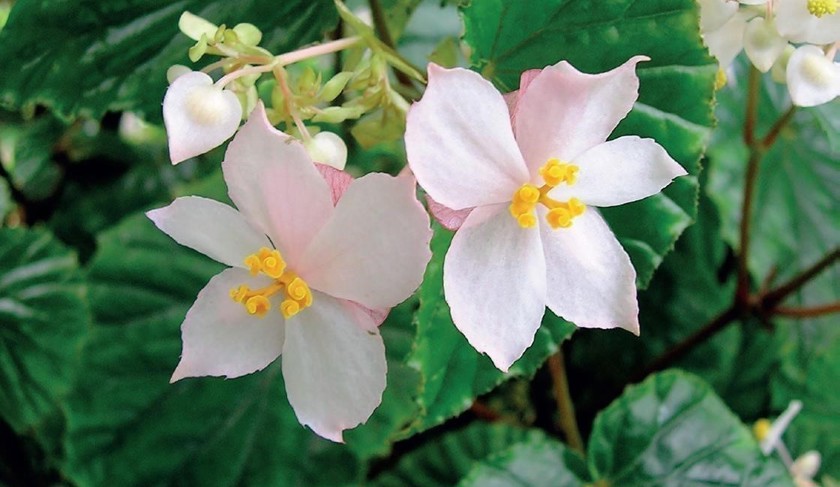
Begonia macintyreana, native to Sulawesi, first described by RBGE scientists
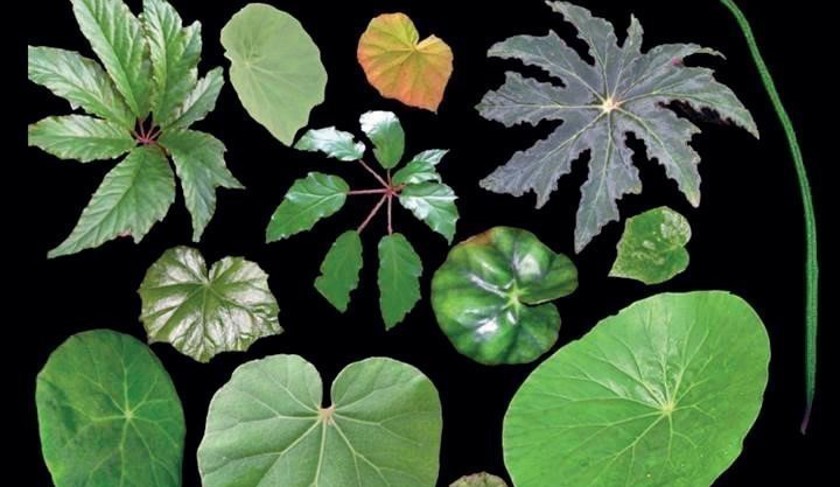
Using the living collection, RBGE scientists study the diversity of Begonia morphology.
Conifer collection
Conifer collection comprises:
- 6 families (75% of known) | 66 genera (97% of known)
- 459 species (73% of known) | 69% wild origin
RBGE has been a world centre for conifer research for over 30 years, and the work of the International Conifer Conservation Programme (ICCP) combines taxonomic, conservation, genetic and horticultural research.
Research using the living collection includes:
- Taxonomy, systematics, evolution and conservation of New Caledonian Araucaria (PhD, MSc projects)
- Taxonomy, systematics, evolution and conservation of Podocarpaceae
- Revision of Podocarpus: Caribbean, Tropical South America, South Western Pacific
- Cuticular micromorphology of Podocarpus
- Rare and threatened conifers from subtropical and tropical regions
- Germination protocols for in-situ restoration and ex-situ conservation of Glyptostrobus pensilis from Lao PDR
- DNA barcoding
- Gymnosperm systematics and identification (MSc & BSc student projects)
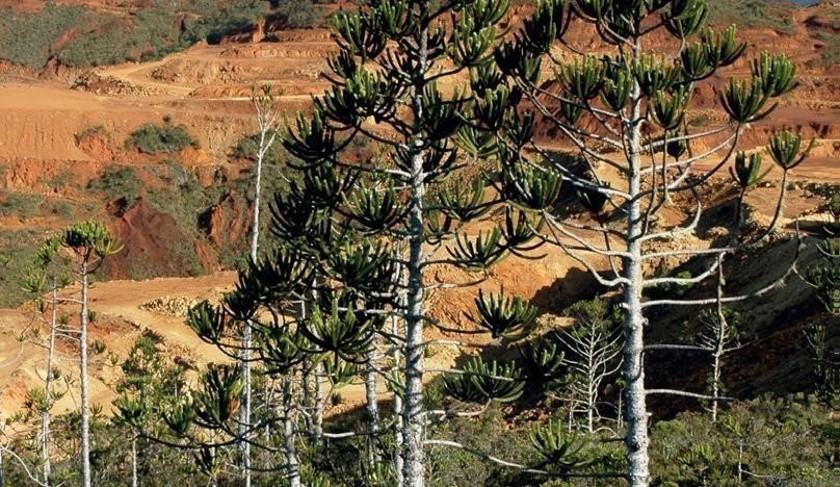
Mining in New Caledonia threatens conifer habitat
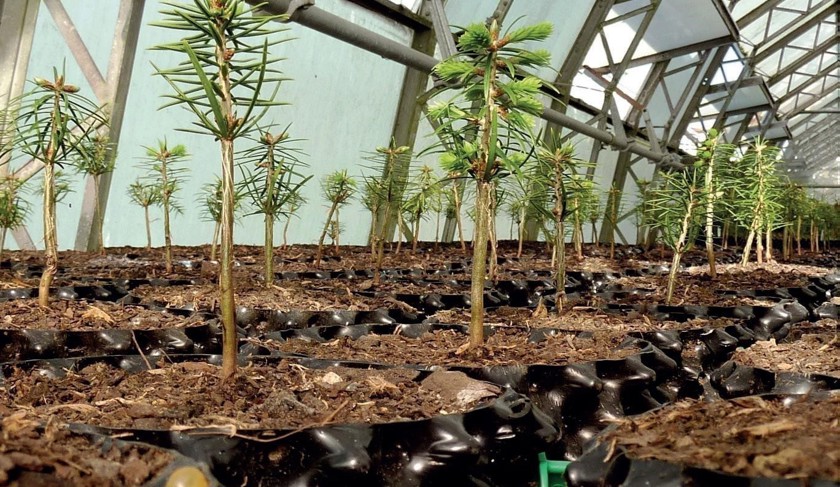
Cultivating conifers at RBGE forms an important part of ICCP work.
Gesneriaceae collection
Gesneriaceae collection comprises:
- 87 genera (53% of known) | 495 species (15% of known)
- 77% wild origin
The Gesneriaceae family has been studied at RBGE for over 50 years. The family is of particular scientific interest due to its morphological diversity and novelty; these characteristics also make certain Gesneriaceae genera and species horticulturally significant.
Current research projects include:
- Systematics of Aeschynanthus (RBGE holds the National Collection)
- Systematics of Cyrtandra native to Sulawesi
- Comparative anatomy and morphology of Gesneriaceae genera across the family
- Seed ontogeny in Old World genera
- Comparative chromosome andgenome evolution of selected Old WorldGesneriaceae genera
- Genetics and evolution of pollinationsyndromes, and of vegetative meristems, in Streptocarpus
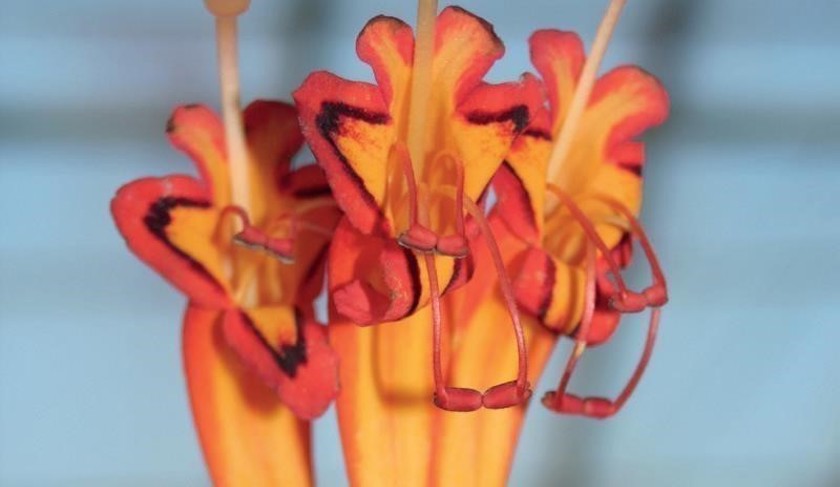
Aeschynanthus speciosus from Borneo
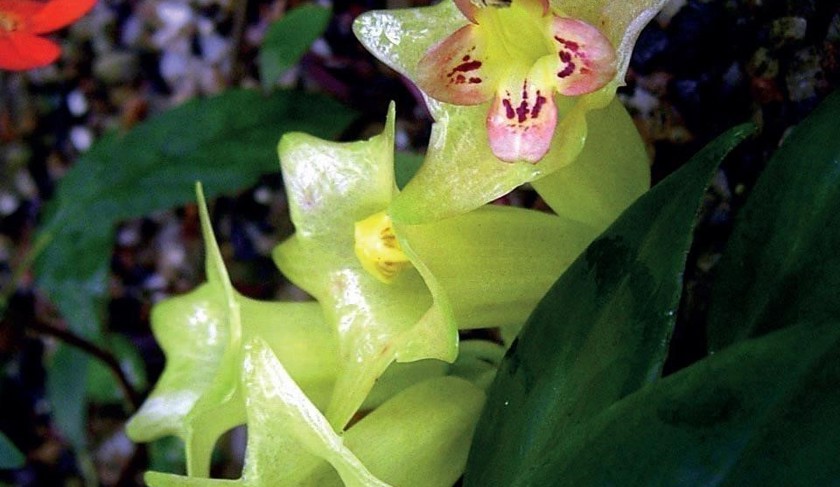
Aeschynanthus citrinus discovered by RBGE staff in Sulawesi
Zingiberaceae collection
Zingiberaceae collection comprises:
- 38 genera (64% of known) | 298 species (17% of known)
- 89% wild origin | 5 UK National Collections (NCCPG)
This is one of the most diverse, well-documented cultivated collections in the world, and forms an important part of worldwide Zingiberaceae research.
The collection provides living tissue for research in taxonomy, systematics and biogeography.
Material is shared with international collaborators. One example is Charles University, Prague, where tissue is used to measure DNA C-values and root tips are collected for chromosome counts. This research helps us to find out how genera of Zingiberaceae have evolved and are related to each other.
Ongoing data capture of all accessions is undertaken for alpha taxonomy and to help curation.
The collection is used for display to represent flora of South East Asia, and to highlight RBGE’s scientific work.
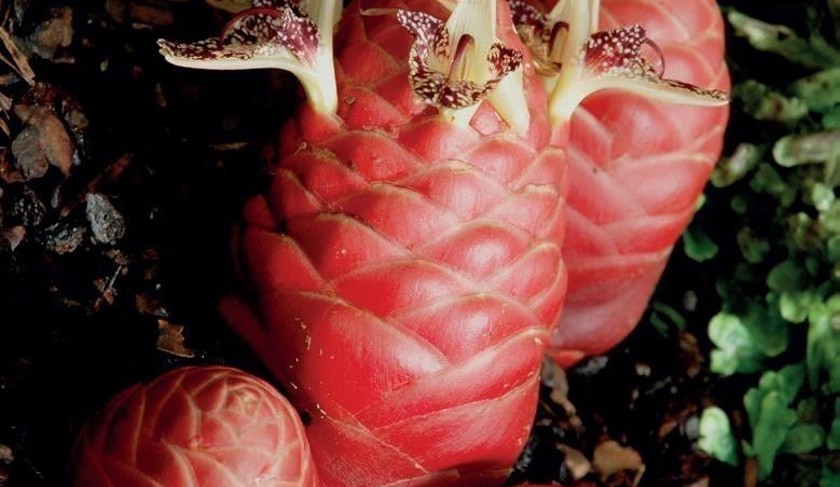
Thai endemic Zingiber newmanii named for RBGE scientist Mark Newman
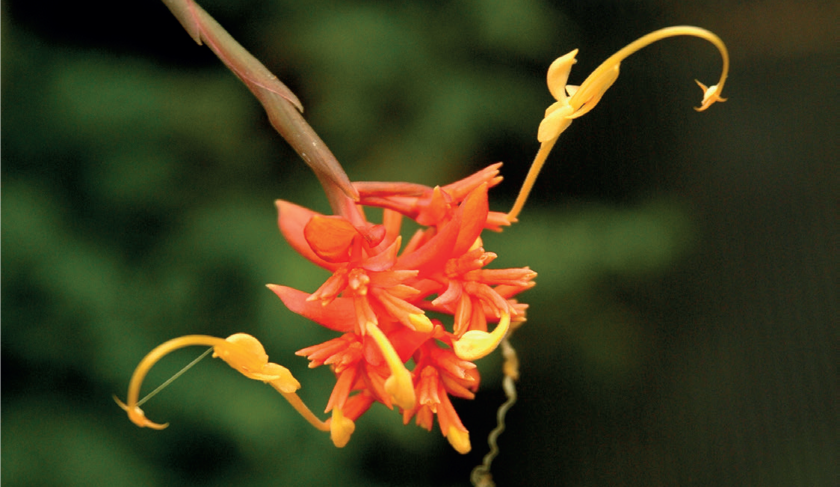
Globba atrosanguinea, from Borneo, part of the National Collection of Globba
Pteridophyte collection
Pteridophyte (ferns and fern allies) collection comprises:
- 39 families (83% of known) | 166 genera (54% of known)
- 799 species (7% of known)
- 84% wild origin | 63% grown from spores at RBGE
RBGE is home to one of the world’s most diverse collections of pteridophytes. Ferns and their allies are grown both under glass, and outdoors across all four of RBGE’s gardens.
- The restored fernery at Benmore houses over 370 ferns, 81% of which were grown from spores in Edinburgh
- Edinburgh is home to RBGE’s spore bank and holds ca.1,200 collections of spores from 450 di erent fern species
- Scientific research using the collection includes an investigation into the evolution of the genome size for certain ferns; this is being carried out at
the Natural History Museum, London, and uses fresh frond tissue - Threatened fern conservation: wild Woodsia ilvensis plants (IUCN red listed as endangered) are regularly monitored, spores collected under licence, plants grown ex-situ, and then re-introduced to the wild
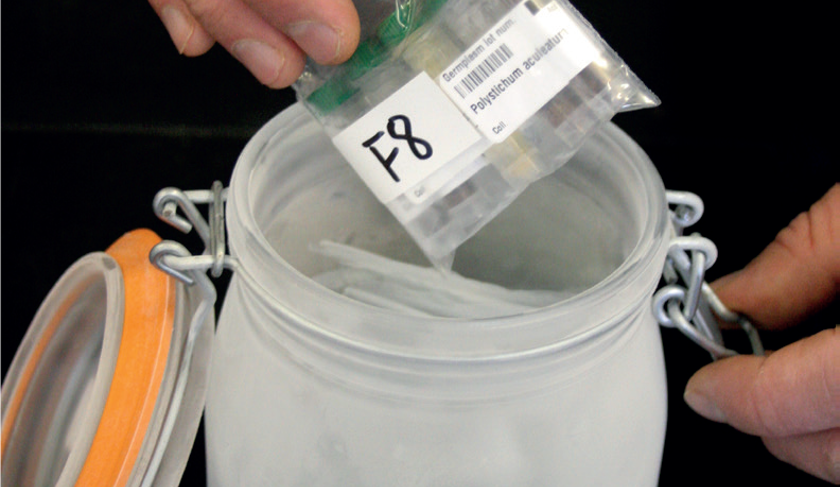
Cleaned spores are catalogued and stored in RBGE’s Spore Bank
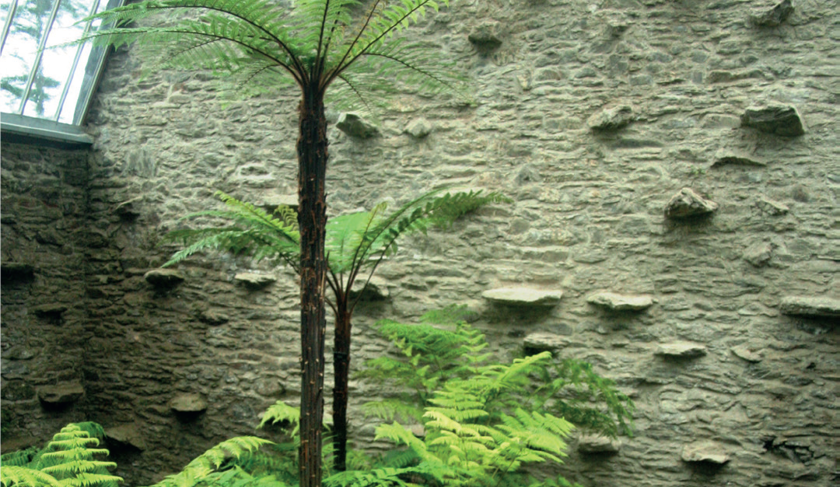
Benmore fernery, home to 81% spore-raised ferns
Tropical Montane Ericacae collection
Tropical Ericacae collection comprises:
- 1 family Ericacae
- The majority of the collection is from South East Asia and includes Rhododendron (subgenus Vireya), Vaccinium, Diplycosia, Dimorphanthera, Agapetes (probably the largest in cultivation worldwide)
- Main genus is Rhododendron (subgenus Vireya). Vireya is about 1/3 of the genus Rhododendron which has about 1,000 species. 200+ of the 300 taxa of Vireya held.
- Smaller collections are from South America and comprise Cavendishia, Disterigma, Macleania, Psammisia, Satyria and Sphyrospermum.
- High proportion (95%) of all of these collections are wild collected.
The Rhododendron family has been studied at RBGE for 100 years and the collection is the largest cultivated collection in the world.
The family is significant due to its morphological diversity, particularly displaying various pollination syndromes. Many of the species are horticulturally attractive.
Our collections are used for taxonomy, DNA/genetics, display, education etc.
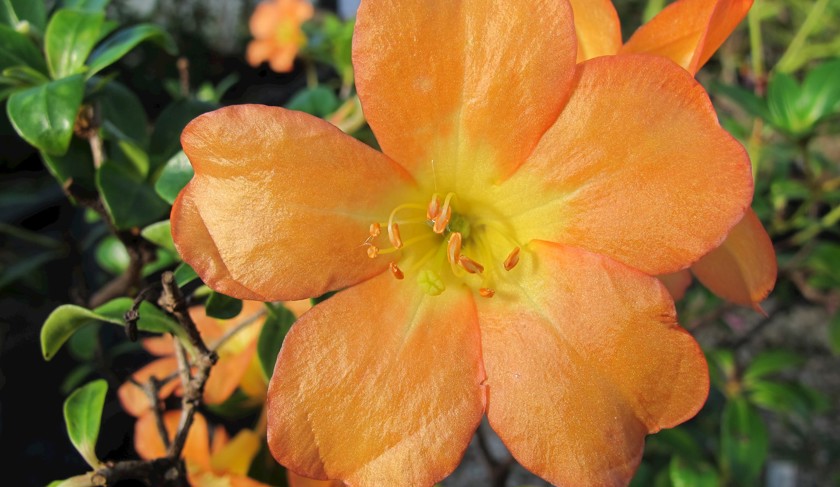
Rhododendron acrophilum
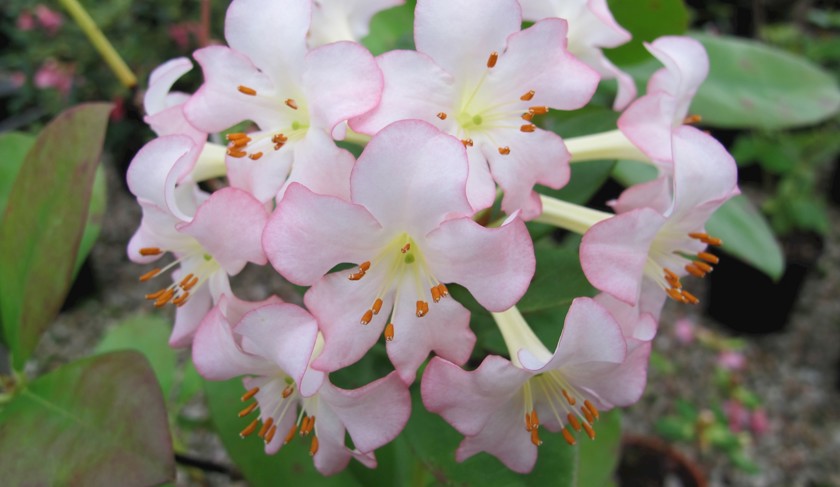
Rhododendron macgregoriae x herzogii
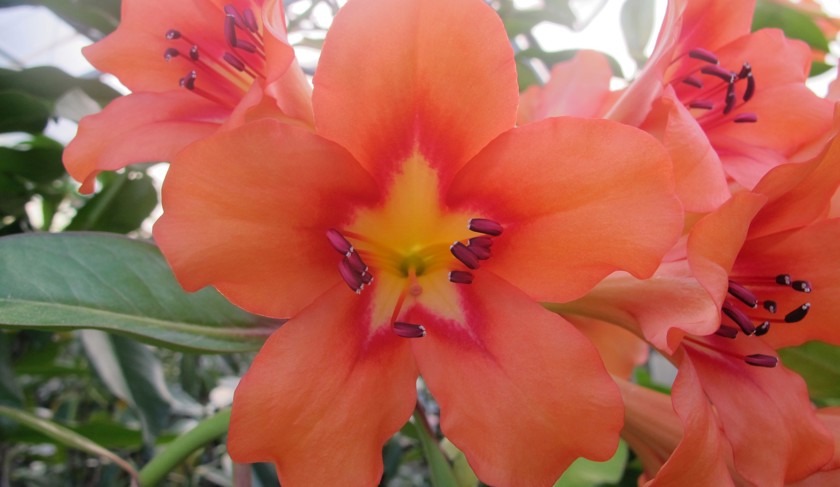
Rhododendron javanicum ssp palawanense
Botanics Recommends
-
Explore our range of unique gifts and more. Every purchase supports the Garden.
-
Explore our unique venues, suitable for every occasion
-
Discover a range of books inspired by the RBGE's work and collections
-
Cultivate your curiosity with our programme of courses for all ages and interests.